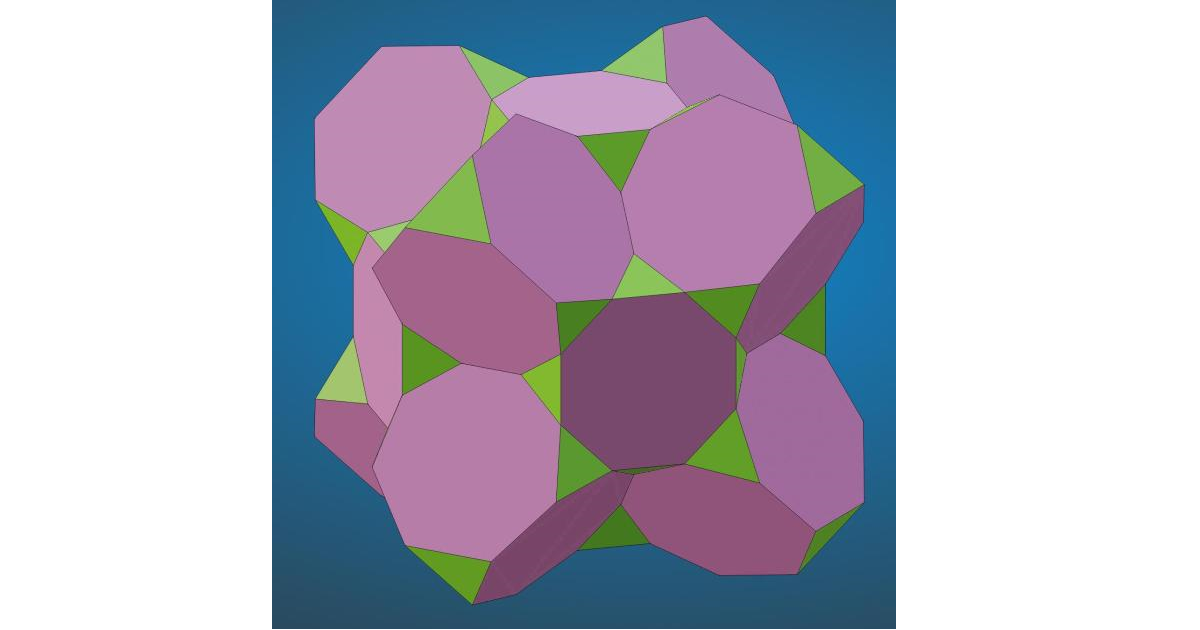- 2.2Impact Factor
- 5.3CiteScore
- 18 daysTime to First Decision
Symmetry in Combinatorial Structures
This special issue belongs to the section “Mathematics“.
Special Issue Information
Dear Colleagues,
The Special Issue 'Symmetry in Combinatorial Structures' should be related to geometric objects, for which their abstract properties are given with combinatorial automorphisms, and their existence (perhaps with geometric symmetries) has to be decided. Here are some examples of possible topics.
Regular maps (a source of symmetry groups and a natural generalization of Platonic solids) and their questionable topological or polyhedral embeddings in 3-space.
Symmetric abstract point-line configurations in the sense of Branco Grünbaum and their embeddings.
Possible additional candidates of regular maps for regular Leonardo polyhedra.
Non-convex 2-spheres with properties like Archimedean bodies similar to the union of the 15 truncated cubes depicted above (refer to the graphical abstract).
Please click on the following video link for more details: https://youtu.be/AailDBdIPVY.
We invite contributions (original research and review articles) covering a broad range of topics around combinatorial and geometric symmetries.
Prof. Dr. Jürgen Bokowski
Prof. Dr. Isabel Hubard
Guest Editors
Manuscript Submission Information
Manuscripts should be submitted online at www.mdpi.com by registering and logging in to this website. Once you are registered, click here to go to the submission form. Manuscripts can be submitted until the deadline. All submissions that pass pre-check are peer-reviewed. Accepted papers will be published continuously in the journal (as soon as accepted) and will be listed together on the special issue website. Research articles, review articles as well as short communications are invited. For planned papers, a title and short abstract (about 250 words) can be sent to the Editorial Office for assessment.
Submitted manuscripts should not have been published previously, nor be under consideration for publication elsewhere (except conference proceedings papers). All manuscripts are thoroughly refereed through a single-blind peer-review process. A guide for authors and other relevant information for submission of manuscripts is available on the Instructions for Authors page. Symmetry is an international peer-reviewed open access monthly journal published by MDPI.
Please visit the Instructions for Authors page before submitting a manuscript. The Article Processing Charge (APC) for publication in this open access journal is 2400 CHF (Swiss Francs). Submitted papers should be well formatted and use good English. Authors may use MDPI's English editing service prior to publication or during author revisions.
Keywords
- combinatorial and geometrical automorphisms of surfaces, sphere systems and manifolds
- graph theory
- embeddings
- surfaces and manifolds
- discrete geometry
- symmetry groups
- geometric polyhedra
- regular maps

Benefits of Publishing in a Special Issue
- Ease of navigation: Grouping papers by topic helps scholars navigate broad scope journals more efficiently.
- Greater discoverability: Special Issues support the reach and impact of scientific research. Articles in Special Issues are more discoverable and cited more frequently.
- Expansion of research network: Special Issues facilitate connections among authors, fostering scientific collaborations.
- External promotion: Articles in Special Issues are often promoted through the journal's social media, increasing their visibility.
- e-Book format: Special Issues with more than 10 articles can be published as dedicated e-books, ensuring wide and rapid dissemination.

